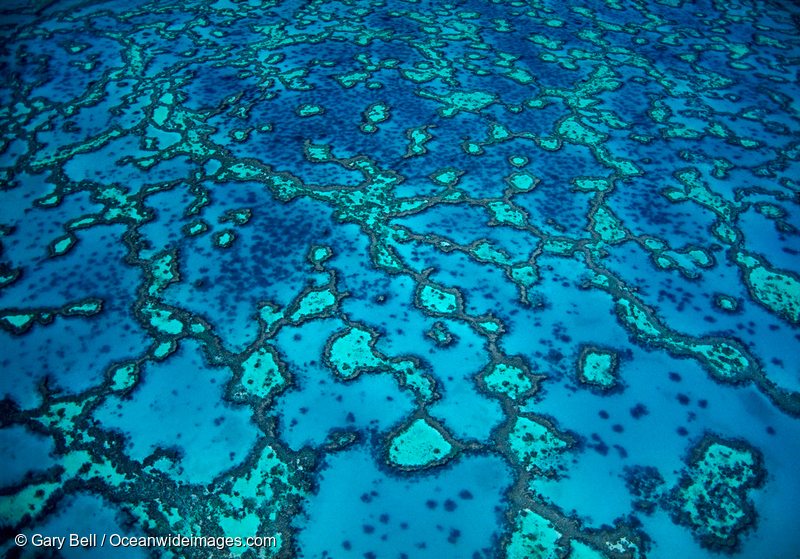Once upon a time, in the distant 60s and 70s, the Great Barrier Reef faced imminent destruction. Tenement applications for drilling and mining covered vast swathes of the reef, with both government and industry enthusiastically backing the plans for mass exploitation.

In the face of the reef’s impending doom a motley collection of ordinary Australians shared a common determination that something had to be done. But the odds didn’t look good. The poet turned campaigner Judith Wright wrote that “if it had not been for the public backing for protection of the reef that we knew existed, we might have given up hope”.
The optimism of the poet was well founded. First in the hundreds, then in the tens of thousands, a people’s movement grew to defend the reef. Everyday Aussies turned activists and campaigners. Scientists and lawyers came forward with vital expertise. At a crucial moment the Queensland Trades and Labour Council approved a total black-ban by all affiliated unions on oil drilling on the Great Barrier Reef.
As hard as is now to believe, the Murdoch-owned Australian opined that the ban would have an unprecedented measure of public support and would probably succeed. It deserved to. Only finally did the politicians follow the will of the people. Through the power and determination of the Australian people, the greatest marine park in human history was established and the Great Barrier Reef lived to fight another day.
Inherently democratic in its size and closeness to the shore, the Great Barrier Reef is truly the people’s reef. Looking back on the first great struggle for the reef between the Australian people and the fossil fuel industry, Wright wrote that “if disasters in the shape of weather, accident and climate change lie ahead, the work done already has shown what can be done to shield it from such dangers and has proved that people will agree, in the event, to supplying the help it needs”.
Unhappily, those disasters are now upon us. Global warming brought the great bleaching of 2015-16 and the dreadful and unprecedented sequel over the summer that has just finished. Our reef is in dire trouble.
But while the people’s reef is grievously wounded, it is still very much alive. And life fights for life. Innumerable animals are now doing what creatures do, navigating the hazards of life as best they can to survive and reproduce in the warming waters. Given time and the right conditions, the people’s reef can recover and life will flourish again.
So how this time around do we supply the help the reef needs? The big lie propagated by Australian government and big business is that it is possible to turn things around for the reef without tackling global warming. As scientists have made clear, it isn’t – we have to stop climate pollution to give our reef a chance.
It is true that Australia can’t save the reef alone because climate change is a global problem. But that does not mean we are powerless to act and we should not be deterred. Because when you love something deeply – as we Australians cherish our people’s reef – then you do all that is within your power to save that thing which you hold so dear. And there is much that is within our power to do.
So what is to be done? The answer does not lie in false techno-fixes or the faux-democratic farrago of the government-business funded Citizens of the Great Barrier Reef. Australia’s greatest contribution to global warming is through our coal, exported and burned in foreign power stations. So our most determined Australian efforts to save the reef must be directed to closing down the coalmining industry, while ensuring decent new jobs and fair transitions for all affected workers and communities.
Again, the balance of power seems loaded against us. First the Queensland premier, Annastacia Palaszczuk, and now the prime minister, Malcolm Turnbull, have betrayed both the reef and the trust of the Australian people by sniveling across the seas, pledging allegiance to the Carmichael coalmine. All too often, the rest of big business is complicit in the crisis by explicitly or tacitly supporting the coal industry. Financial institutions such as CommBank continue to invest in the fossil fuel projects that are bringing disaster to the reef.
But, once we are roused, never underestimate the power and determination of the Australian people to defend our iconic animals and the natural beauty of our lands and seas. The extraordinary success of the Stop Adani Roadshow – which sold out across the eastern Australian capital cities reaching an audience of thousands – is just a glimpse of the popular will to fight the coal industry for the future of our reef.
We have the opportunity to write our own story, not of despair but of defiance. If we, the people of Australia, stand determined together against coalmining and the rest of the fossil fuel industry then the future of our reef is not bleak but hopeful.
The roadmap to full recovery for our reef will be decades or even centuries in the making. And it is going to get worse before it gets better. But we, the Australian people, can again agree to supply the help it needs, to give the reef we love the best chance of future flourishing. Now is the time to get involved.
• This op ed was originally published on The Guardian and is a modified version of comments made at Global Warming and the Mass Bleaching of Corals, a public event held by the Sydney Environment Institute of Sydney University on 31 March.


